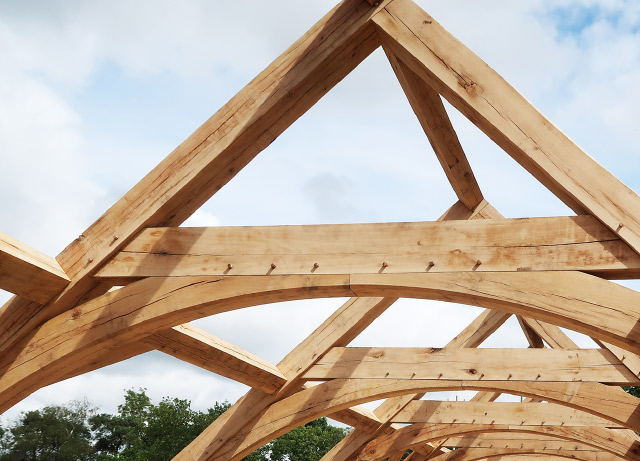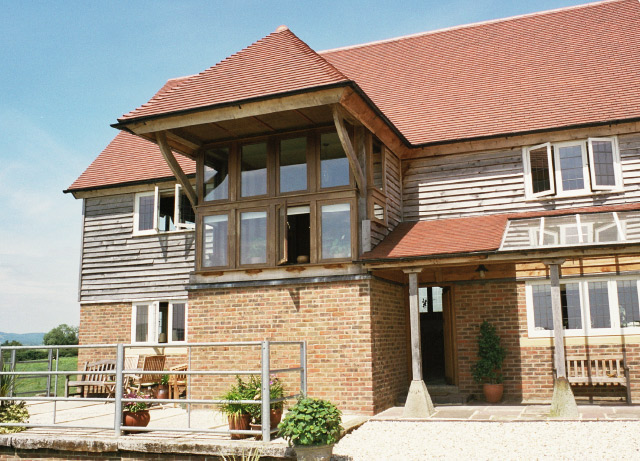OAK FRAME DESIGN
Materials and finishes.
Oak
Oak has been a cornerstone of timber framing for centuries, valued for its exceptional strength, durability, and resistance to decay. Its dense grain makes it ideal for structural elements like posts, beams, and braces, capable of withstanding heavy loads and weather exposure. Oak’s natural beauty also enhances the character of traditional and contemporary timber frame buildings alike.
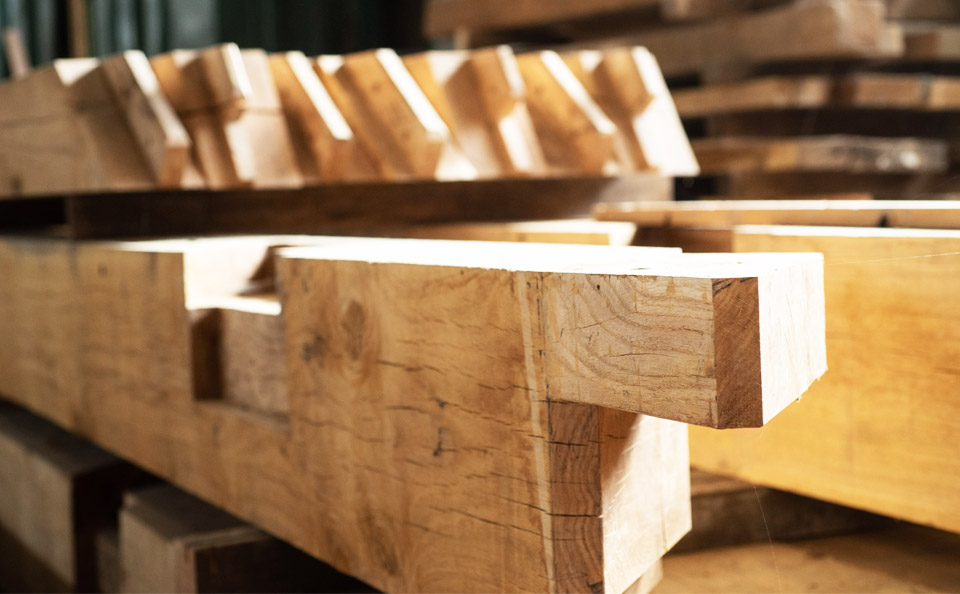
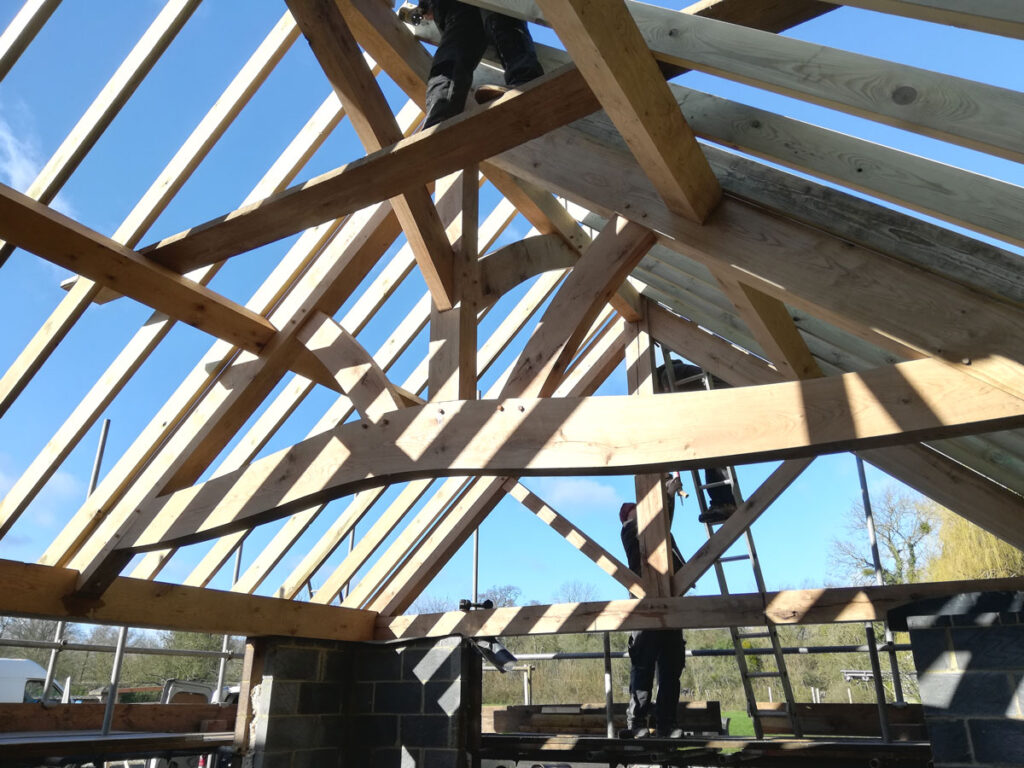
Green oak
Green oak has a high moisture content, often over 50%. In this state, it’s easier to cut and shape, making it ideal for traditional timber framing, beams, and large structural elements. We source our oak from sustainably managed forests in France. Its raw, natural appearance adds character to rustic and heritage-style buildings. As the oak dries over time, it naturally shrinks and hardens, enhancing its strength and stability. While green oak is our primary material, we also use air-dried or steady timber where appropriate.
Air-dried Timbers
Air-dried timber refers to wood that has been naturally dried by exposing it to air over an extended period and according to its dimension and age can vary from around 35% moisture content down to around 20%. This traditional drying method allows the timber to gradually lose moisture, reducing the risk of warping, cracking, and other forms of stress that can occur with faster drying techniques like kiln drying. Air drying generally takes months to years, depending on the wood species, thickness, and local climate conditions. The process leads to a more stable and resilient timber, ideal for shaped elements and situations where we want to keep shrinkage/movement to a minimum.
Surface finishes for your oak home
There are a variety of options for finishing the surface of the timbers in your oak frame. These methods each leave the wood with a particular and distinct character. Ask to see our samples if you want to get an idea of how this will appear in the finished frame.
External finish
From the outside the frame may be fully in view, with glazing, lime render, brick, or even wattle and daub in the panels between the timbers. Curved bracing can be jointed into the frame to present a traditional external appearance.
Alternatively, many people choose to present the frame internally and clad the exterior elevations. For the cladding, there is a wide range of options. Boards can be arranged horizontally or vertically; presenting a flat, overlapping or staggered surface; using oak, elm or larch. With vapour membranes and rigid insulation material, the frame is superlatively weather-tight and warm.
Sand blasted sawn finish
The oak arrives from our sawmill with a sawn finish. The frame is jointed and erected on site. The frame can then be sand blasted. The impact of the sand erodes the softer summer growth in the grain and the winter growth rings stand out in relief. It is always best to do this after the roof is on and the frame is no longer subject to rainwater staining.
Planed finishes
The oak is all planed to remove any saw marks and leave a perfectly smooth surface prior to jointing. During the workshop and site phases of production the frame inevitably sustains some marking and may get wet on site, causing water staining. We therefore recommend one of the following two options to re-clean the enclosed frame.
Option 1 – Sand blasting
The frame is lightly sand blasted to remove any marks and staining. When the frame has been planed beforehand, sand blasting will give a better finish than a frame that is sand blasted from rough sawn timber.
Option 2 – Manual cleaning
After the frame has been erected and enclosed, the planed timbers can be cleaned with oxalic acid, scrapers and sanders. This then gives a clean, smooth finish, very different from sand blasting.
Oiled Finishes
Workshop oiling
Oiling the timbers has a dramatic effect on their appearance and provides the added benefit of slowing the rate at which the timbers exterior loses moisture, thereby reducing the surface cracking typically seen in Oak.
The frame is cleaned after jointing and is then oiled at our workshop prior to delivery. When erected with an oiled finish it is less susceptible to water staining. The frame is still vulnerable to marking during any following building works.
Lime wash
The effect of washing green oak with lime is to initially produce a brown colour as the lime reacts with the acidic sap. This fades a little with time and chalky residue can be seen in the fissures of the surface. When regularly applied this eventually fills the surface cracks of the timbers and the joints. The darker colour is often thought desirable where new timber is next to old timbers, in a restoration context for example. The lime wash can be applied after sandblasting or planing and can be followed with oil treatments as above.

Extensions
With our experience designing green oak buildings and house extensions, we are ready and waiting to turn your plans or ideas into a reality.
Case studies
Explore our latest projects and be inspired by some of our current builds.
Oak framed houses
Our in-house design team can bring your dream oak frame building to life from the ground up, just as you envisioned it.
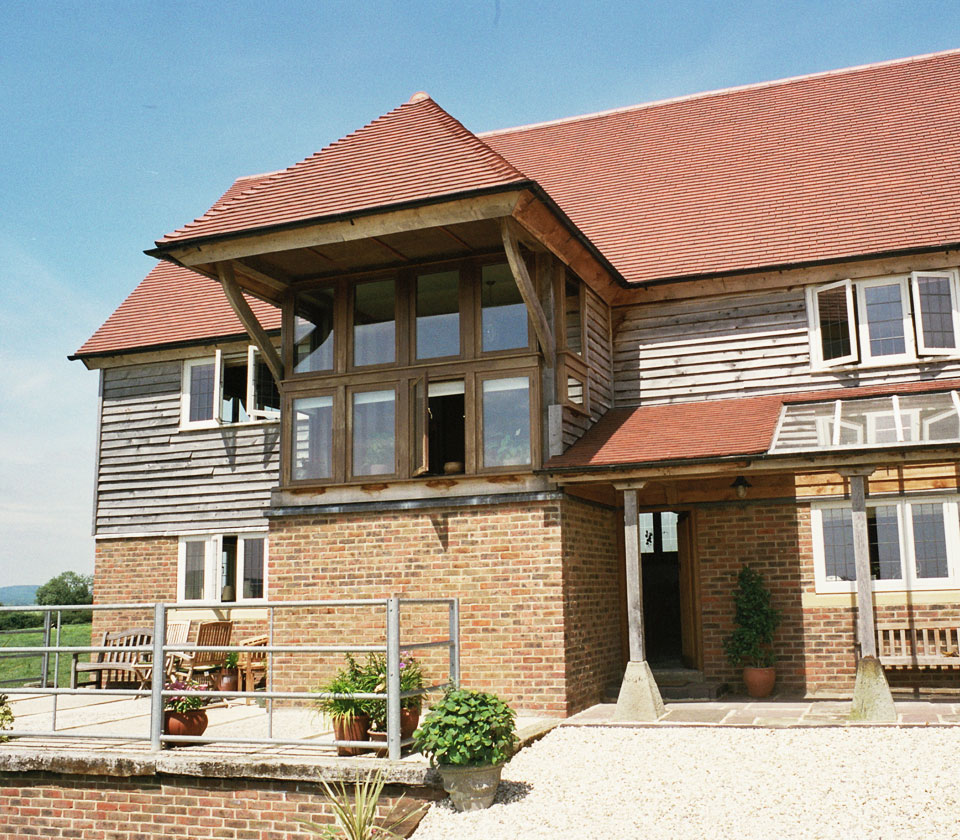
GET IN TOUCH TODAY
Tell us about your next project.
To discuss your project with us, arrange a meeting or just gain some advice, please get in touch. Alternatively you can contact us on 01453 828 788 or drop us an email to: info@oakframecarpentry.co.uk


